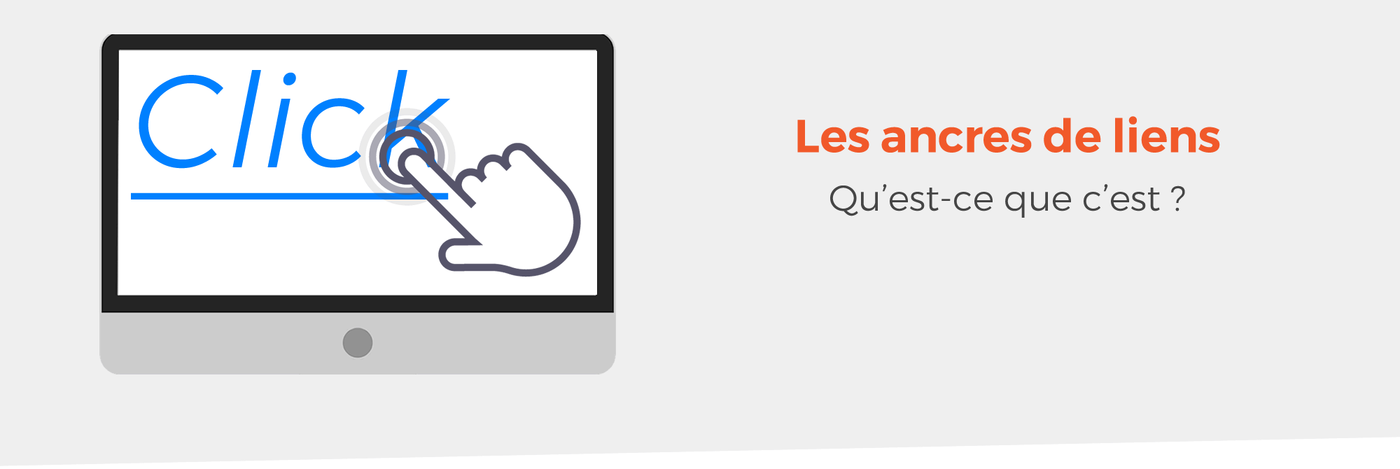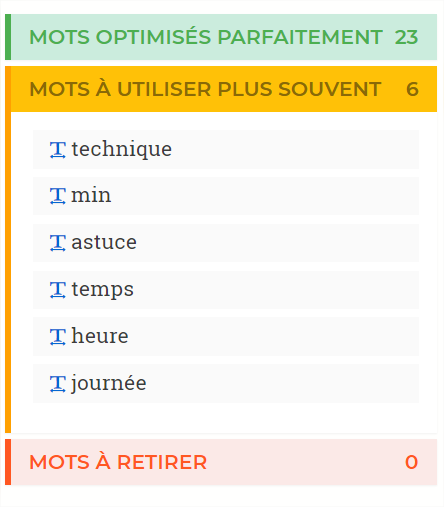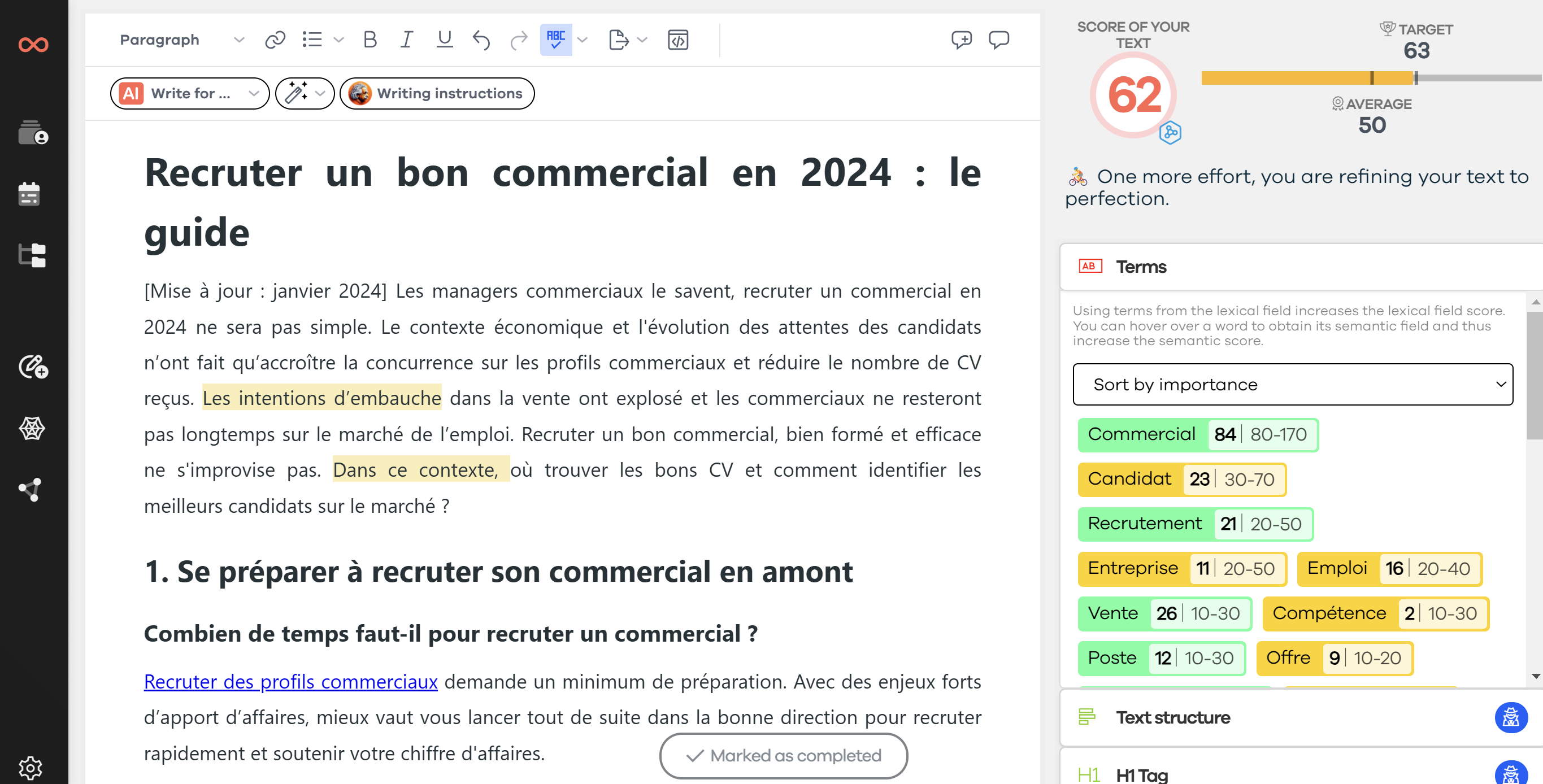To succeed in SEO, you must add links (internal and external) within your content. This not only improves the user experience but also sends a message to Google. However, for the information sent to search engines to be positive for your SEO, you must pay attention to the HTML link anchors you use! Discover everything you need to know about this essential element in organic search optimization.
🚀 Quick Read: 8 HTML Anchors and 5 SEO Mistakes to Avoid
In HTML, there are 8 different types of links you'll find on the web. Not all have the same SEO power, and some should be used sparingly, as they may result in penalties from search engines[1].
8 Types of Link Anchors
- Exact Match: You use the targeted keyword directly.
- Partial Match: You associate other terms with the targeted query.
- Brand: The anchor contains the company name.
- Generic Dull: Learn more, click here, this link, etc. are considered generic words.
- Semantic Words: The anchor corresponds to a determination drawn from the semantic field corresponding to the key query.
- Title: You directly use the H1 of the targeted page.
- URL: The target address is directly used as an HTML link anchor.
- Image: The anchor contains no text. To access the destination page, you must click on an image.
5 Link Anchor Optimization Mistakes
- Using only one type of link.
- Keyword stuffing in HTML anchors.
- Redirecting to low-quality websites.
- Lack of relevance between content and link target.
- Too frequent repetition of the same link anchor.
❓ What is a Link Anchor in HTML?
When you click on it, you are directed to another web page. It is the visible and clickable part of a hyperlink (under the text). The link anchor is usually characterized by the following HTML code:
https://www.seoquantum.com/billet/ancre-lien">This is a link anchor !
In organic search optimization, there are 8 different categories of link anchors that you can use in your internal linking or to set up your link building strategy. Let's discover them together…
1️⃣ The Exact Match Anchor
Imagine someone decides to direct their readers to this article and uses the expression "link anchor" for this purpose.
"In SEO, link anchors are essential for positioning your website: learn how to optimize them!"
In this case, we are talking about an exact match. Indeed, this person uses the keyword I chose as the main subject of my publication.
The advantage of this type of link is its clarity. Indeed, both users and search engines will have no trouble understanding the subject of the publication. Google considers anchor texts as a description of a link. My article thus gains relevance on the keyword "link anchor".
- Penalty Risk: Important
2️⃣ The Partial Match Anchor
Similar to the exact match, a partial match uses keywords related to the subject of the page. However, there is a difference.
"Link anchor: pitfalls to avoid" or "tips for your link anchors"… Here are two examples of partial match link anchors. Indeed, the main keyword is used, but it is not alone. The additional words make this anchor a partial match rather than a perfect match.
This type of text has several advantages. First, it can be modified to fit well within the text of the publication. Also, since the main keyword is used, it helps maintain the relevance of the page.
- Penalty Risk: Moderate
3️⃣ The Brand Anchor
The text of this type of anchor uses a brand or company name. Using the expression "SEOQuantum" to direct to an article hosted by the same-named website constitutes a "brand" link anchor. It is easy to understand that the page to which the link points is associated with this site.
Google considers this a healthy practice and rewards it by improving the site's visibility. And because the name is linked to the main activity of the brand, readers have a good idea of the type of content the site offers. If you use the anchor text "Starbucks," I know the publication will be about coffee. So try to use this type of link anchor when the brand is well-known.
- Penalty Risk: Low
4️⃣ The Generic Anchor
Generic anchors can be used when you want to divert your readers' attention. In this case, the link is not subtly included within your content. Here are some examples of generic anchors:
- Click here
- The page
- The article/post
- Learn more
- Read more
- Here
- …
This is an invitation for the user to click on the link ("Click here and…"). It is the most direct way to invite your readers to visit a page. However, they do not allow search engines to know the subject of the link. Keep this in mind when considering using generic anchors.
- Penalty Risk: Low
5️⃣ Semantic Words
Here, it simply refers to keywords that are linked by the same theme. The theme of your main key expression. Google automatically associates semantic keywords with each other. You can use the SEOQuantum tool to easily and quickly find them:
So, if you want to post a link pointing to similar content but want to avoid using the same keyword, using the semantic field is your best option.
- Penalty Risk: Moderate
6️⃣ Publication Titles
Using the publication title in the link anchor seems quite natural. This allows both your readers and search engines to know precisely the subject of the content.
The only downside is that it is sometimes difficult to integrate this type of link anchor into your text. It's all about layout, so it's up to you! The important thing is that the link is useful to your readers.
- Penalty Risk: Moderate
7️⃣ The URL
This is simply a URL, without any additions or modifications. So, instead of writing text, you will simply copy the URL of the page. It may not be very aesthetic, but it has the merit of being clear.
Keep in mind:
- Favor this type of link anchor when you want to direct to the homepage of a website (for example, https://www.seoquantum.com/).
- Avoid long and complicated URLs like this one: https://www.seoquantum.com/billet/optimisez-vos-contenus-mots-rares.
The fact is that if the URL is not short and precise, the link anchor will not be pleasant to read.
- Penalty Risk: Low
8️⃣ Images
By clicking on an image, you are automatically directed to another web page. In this case, the image acts as an HTML button. The link anchor resides in the alt attribute of the image tag.
If you are not familiar with the alt attribute, know that it is used by search engines to "read" the image. It serves as a description and allows indexing robots to understand it. So don't forget to fill in the alt tag when using this type of button[2]. That's where your anchor text should be.
- Penalty Risk: Low
As you can see, link anchors are visible to both users and Google's indexing bots. That's why they are so important!
Link anchors, therefore, have an influence on your website's organic search ranking.
Indeed, they provide valuable clues about the content they refer to.
What is the best way to insert a link into a publication? Probably by making sure it adapts well to the text. Everyone is free to have different tricks. The options are varied.
👨🏫 A Little History on Links and Google
We all know that backlinks are important signals for Google to get an idea of the importance and relevance of the page. Unfortunately, as is often the case with SEO, there are dishonest and artificial practices that allow cheating ("Black hat").
Google associates links with their anchors and some people do not hesitate to use a link and its anchor multiple times. In this way, the content appears among the first results when the expression used in the anchor text is used as a keyword in a search.
In 2012, the Penguin algorithm[3] put an end to this dubious practice. It penalizes websites that practice spamming in terms of anchors or over-optimize their link anchors. Link anchors are, indeed, part of the elements that can be optimized to improve search ranking.
The link anchors of outbound links are as important as those of inbound links!
Since you have no control over how other people write their link anchors, all you can do is optimize your pages to adapt the best internal linking and the most relevant anchors.
The key to successful SEO lies in good linking of your website's pages.
❌ The 5 Mistakes to Avoid at All Costs if You Want to Avoid Google Penalties
1. Using only one type of link anchor
There are 8 different options. You can modify all of them to meet your needs and thus create 64 new types of link anchors. Well, I might be exaggerating, but you get the idea. Why vary?
First, because it's never good to limit yourself. Then, because you risk penalties. It's impossible to include your anchors naturally using only one type: you need to adapt on a case-by-case basis. Moreover, variation is rather rewarded by Google.
2. Using many keywords in your anchors
As we have seen earlier, link anchors send a signal to Google. This means that they have an impact on relevance and ranking. Keep in mind, however, that harmful practices exist and are no longer rewarded today.
There is no doubt about it, overloading your link anchors will result in penalties. So, avoid angering Google!
- If you want to use keywords, do so sparingly and only when absolutely necessary.
- One or two keywords are enough, and you are sure not to be penalized.
- Use keywords only when it is really necessary. If it is not, then I advise you to avoid this practice.
3. Directing readers to dubious websites
Unless your site is also a dubious site, avoid such associations. Try to post links only to quality sites. Directing your readers to shady websites does not make a good impression.
If you use extensions like AdBlock, pause them before checking the quality of the pages you plan to include. Some pages may appear normal and even pleasant to read only because all the bad things have been blocked.
Keep in mind that your readers do not always use these extensions. You could put them at risk if you do not ensure the quality of the pages before creating your external links.
4. Not being relevant
As I have said several times (I repeat it because it is very important): the link anchor provides information to both search engines and readers. So make sure your text is relevant and informative! If you have trouble achieving this because you fear it will be considered spam, I advise you to include it in relevant text.
Google is smart enough to understand a word by analyzing the accompanying text (context). The text surrounding your link is therefore taken into account. Thus, Google will understand the subject, even when the link anchor contains no keywords, if it is surrounded by relevant text.
Here is an example:
"Links and link anchors are at the heart of Google's algorithm. To understand them, it is important to learn how to use link anchors to optimize your SEO. To learn more, visit our article."
5. Using the same anchor text multiple times for the same URL
Be aware that this is considered spamming (especially if it concerns external links). Remember: avoid spam! If you want to improve your site's ranking without cheating, avoid these practices.
It happens to be so enthusiastic about sharing a link to content you enjoyed and not paying attention to link anchors. That's why you should always check them before publishing and make sure they are not considered spam.
Adding links is essential for your SEO, as they allow indexing bots to better understand the theme of your site's pages. To avoid always offering a raw and unreadable URL, you use HTML anchors. These link anchors are then taken into account by search engines, which will influence your positioning in the SERP.
While "old-school" SEOs had figured out the trick and over-optimized their anchors, Google reacted. In 2012, the algorithm update known as "Penguin" shook up the results pages. What was once considered optimization became spam!
That's why I strongly advise you not to abuse keywords in your link anchors. Stay natural, think about the user, and link your pages relevantly.
It's your turn to play!
🙏 Sources Used to Write This Article
[1] https://moz.com/learn/seo/anchor-text
[2] https://developers.google.com/search/blog/2007/12/using-alt-attributes-smartly
[3] https://www.searchenginejournal.com/google-algorithm-history/penguin-update/
Need to go further?
If you need to delve deeper into the topic, the editorial team recommends the following 5 contents:



